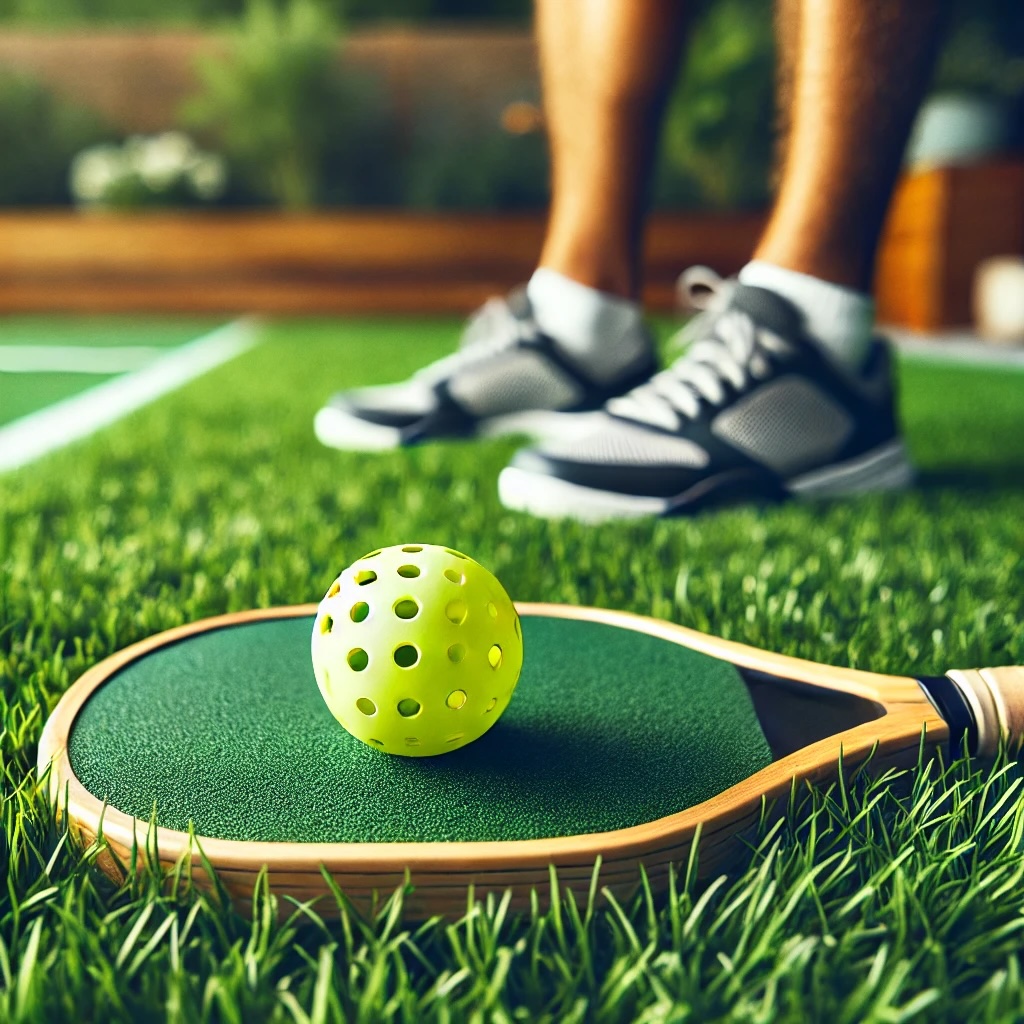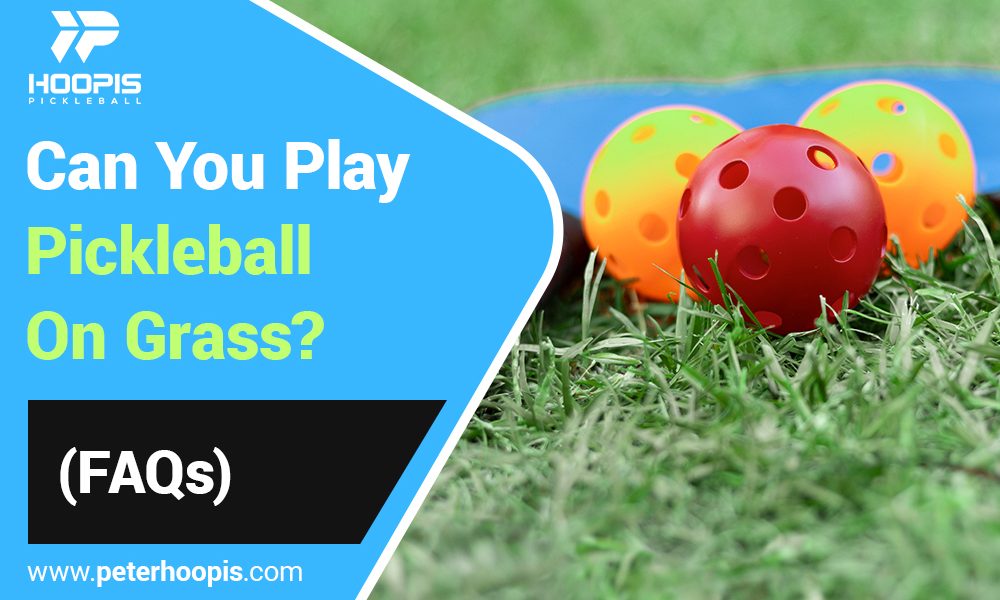Let’s get this out of the way first: Yes, you can play pickleball on grass.
But—there’s always a “but,” right?—it’s not exactly the ideal surface for the game. Pickleball was designed for smooth, hard courts where the ball bounces predictably and players can move easily. Grass, on the other hand, can be a bit… unpredictable.
That doesn’t mean you can’t have a blast, though!
If all you’ve got is a backyard or a grassy park, you can still enjoy a fun, low-pressure game. Think of it as a more casual version of pickleball—less about competition and more about making it work with what you’ve got.
In this post, we’ll cover everything you need to know about playing on grass: the pros, the cons, and some helpful tips to make it work. Whether you’re testing out a new paddle or just want to squeeze in a game wherever you are, we’ve got you covered.
Let’s get started!
What Makes Pickleball on Grass Tricky?

If you’ve ever played pickleball on a standard court, you know how much the game relies on quick footwork and consistent ball bounces.
Grass changes the game—literally.
Here’s why:
- Unpredictable Bounces
Grass isn’t flat like a court. Uneven patches, dips, and soft spots can make the ball bounce in strange ways—or not bounce at all. Forget those perfectly timed shots. On grass, it’s more about adapting to the unexpected. - Slippery Footing
Running and pivoting on grass can be a challenge, especially if it’s damp or freshly mowed. Your shoes might slip, making quick movements tricky and sometimes a little risky. - Slower Game Pace
Grass slows everything down. The ball won’t travel as quickly after it hits the ground, and you might find yourself taking extra steps just to reach it in time. It’s a more relaxed pace but might not satisfy competitive players. - Wear and Tear on Equipment
Paddles and balls aren’t designed for grassy surfaces. You might find the ball getting scuffed up faster, or the paddle edges taking more wear and tear than usual.
Does that mean playing on grass isn’t worth it?
Not at all. You just need to approach it with the right mindset—and maybe a few adjustments.
How to Make Pickleball on Grass Work
Alright, so grass isn’t perfect—but with a few adjustments, you can still have a great game. Here’s how to set yourself up for success:
- Choose the Right Spot
Look for the flattest, most even patch of grass you can find. Avoid areas with hills, holes, or soft, soggy spots. A well-maintained lawn or park is your best bet. - Use a Portable Net
Standard pickleball nets work fine, but a portable net is easier to set up and move around. Bonus: If the grass is uneven, you can adjust the net height to suit the surface. - Pick the Right Ball
Opt for a softer, lighter outdoor pickleball. Heavier balls might sink into the grass and lose their bounce entirely. Some players even use foam or practice balls for a smoother experience. - Wear the Right Shoes
Traction is everything when playing on grass. Athletic shoes with good grip, like turf shoes or cross-trainers, can help you avoid slipping. Don’t even think about flip-flops or anything without support. - Adjust Your Expectations
Grass pickleball isn’t about precision or speed. It’s about having fun, enjoying the outdoors, and rolling with the quirks of the surface. Think of it as a unique challenge—and maybe even a good laugh!
With these tweaks, you’ll be ready to take your game outside the box (or court).
When Does Grass Pickleball Make Sense?

Grass pickleball might not replace your usual court game, but there are definitely times when it shines. Here are a few scenarios where grass is the way to go:
- Backyard Fun with Friends and Family
Hosting a barbecue or picnic? Setting up a quick pickleball game on the grass is a crowd-pleaser. It’s casual, fun, and gets everyone moving—even if they’ve never played before. - No Court Nearby? No Problem.
If the nearest court is miles away but you’ve got a grassy field close by, why not make do? It’s better than skipping your pickleball fix altogether. - Practice Without the Pressure
Grass games are perfect for working on your hand-eye coordination or just trying out new shots. With a slower pace, you can focus on improving your skills without worrying about every bounce being perfect. - Kids’ First Pickleball Experience
Grass is a forgiving surface for beginners, especially kids. There’s less chance of falls and scrapes, and it’s a fun way to introduce them to the game without the pressure of a real court. - Just for the Joy of It
Let’s face it: Sometimes, pickleball is less about perfection and more about having a good time. Playing on grass adds a relaxed, backyard vibe that’s perfect for kicking back and enjoying the day.
So, while grass might not be the official surface for pickleball, it definitely has its moments. It’s all about knowing when and how to make it work.
The Final Bounce
So, can you play pickleball on grass? Absolutely.
Is it the same as playing on a hard court? Not even close—but that’s part of the fun! Grass pickleball is all about embracing the imperfections, enjoying the outdoors, and maybe even discovering a new twist on your favorite game.
Whether you’re hosting a backyard match, testing out some new shots, or just looking for a way to keep the game going wherever you are, grass can be a great option.
So grab your paddle, pick a spot, and give it a try. Who knows? You might just find that the quirks of grass pickleball make it even more enjoyable.
Game on!


